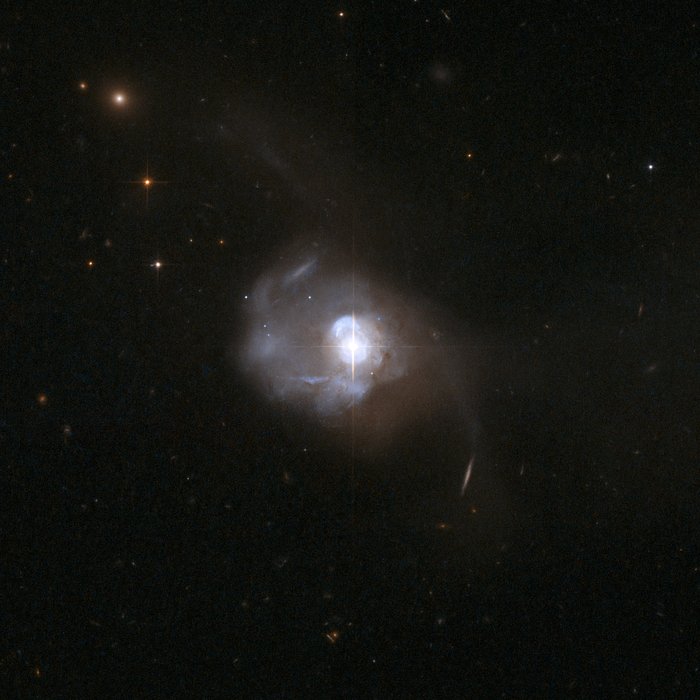Markarian 231, host galaxy of double black hole
This Hubble Space Telescope image reveals a bright starlike glow in the center of the interacting galaxy Markarian 231, the nearest quasar to Earth. Located 600 million light-years away, we are seeing the galaxy as it looked before multicelled life first appeared on Earth. Quasars are powered by a central black hole that heats the gas around it to unleash tremendous amounts of energy. Hubble spectroscopic observations infer the presence of two supermassive black holes whirling around each other. Because such a dynamic-duo pair are found in the nearest quasar, it would imply that many quasars host binary-black-hole systems. It would be a natural result of a galaxy merger.
Links:
Credit:NASA, ESA, the Hubble Heritage Team (STScI/AURA)-ESA/Hubble Collaboration, and A. Evans (University of Virginia, Charlottesville/NRAO/Stony Brook University)
About the Image
NASA caption
| Id: | opo1531b |
| Type: | Observation |
| Release date: | 28 August 2015, 11:08 |
| Size: | 2363 x 2363 px |
About the Object
| Name: | Markarian 231 |
| Type: | Early Universe : Galaxy : Component : Central Black Hole |
| Distance: | 550 million light years |
| Constellation: | Ursa Major |
| Category: | Quasars and Black Holes |
Wallpapers
Coordinates
| Position (RA): | 12 56 14.14 |
| Position (Dec): | 56° 52' 25.26" |
| Field of view: | 1.97 x 1.97 arcminutes |
| Orientation: | North is 147.3° right of vertical |
Colours & filters
| Band | Wavelength | Telescope |
|---|---|---|
| Infrared I | 814 nm |
Hubble Space Telescope
ACS |
| Optical B | 435 nm |
Hubble Space Telescope
ACS |


